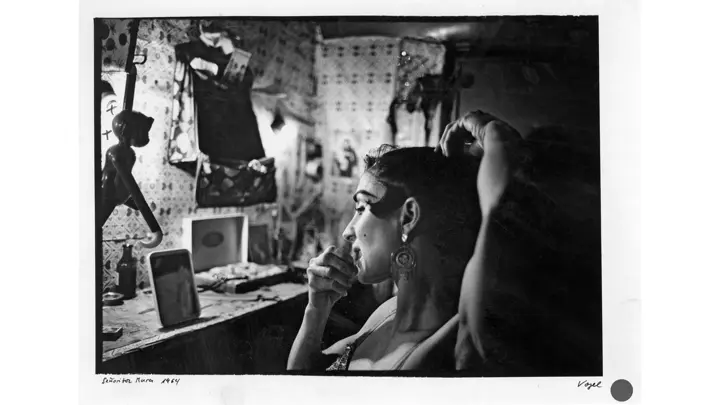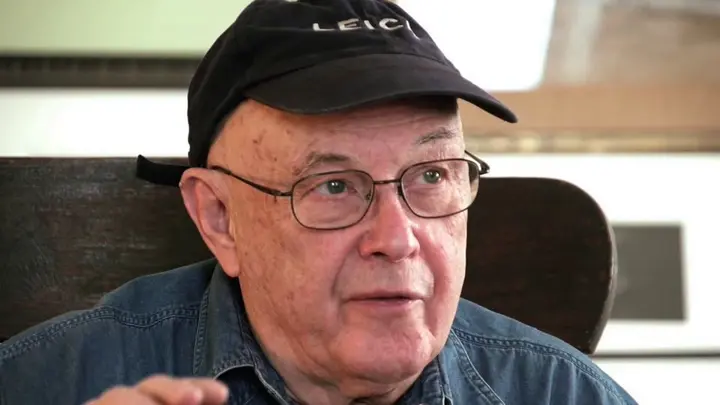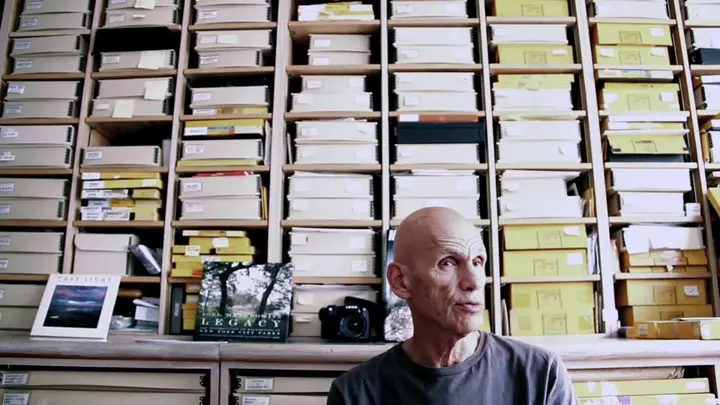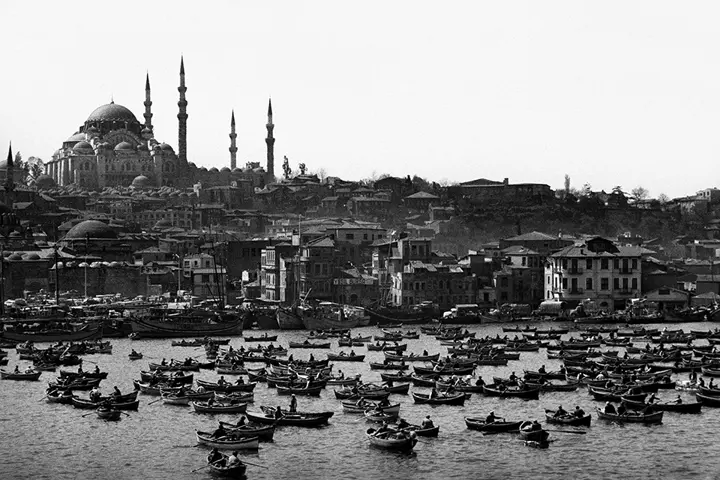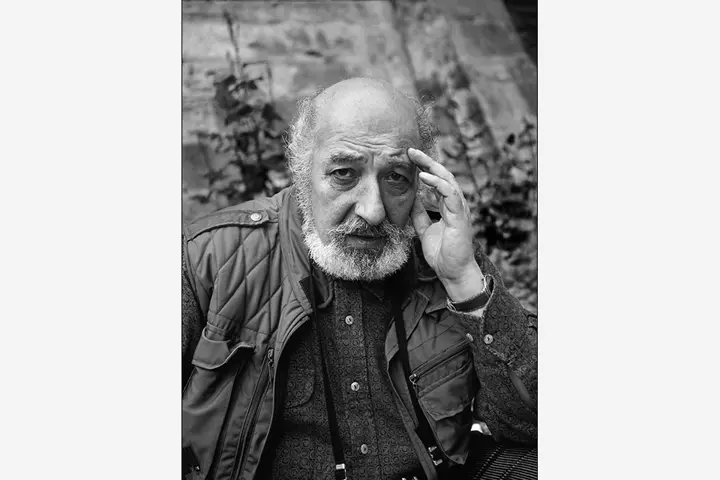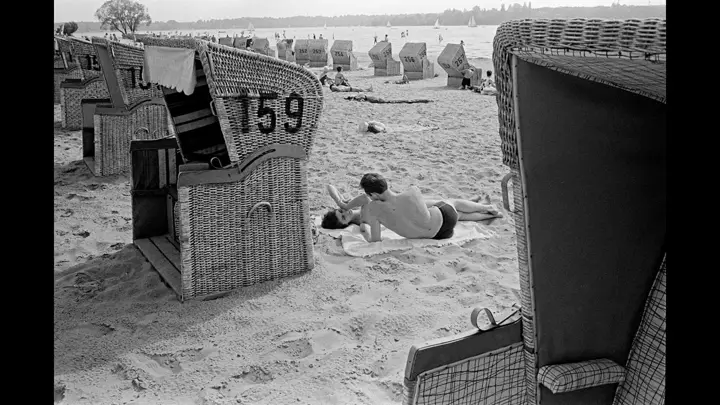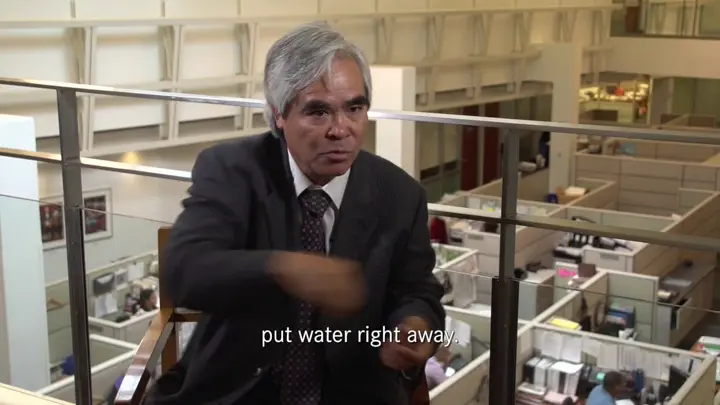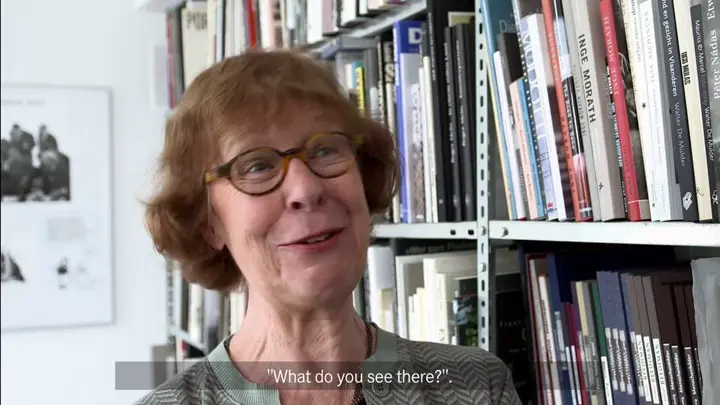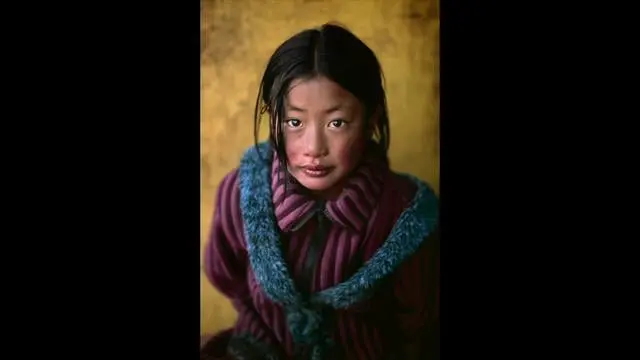라이카 명예의 전당
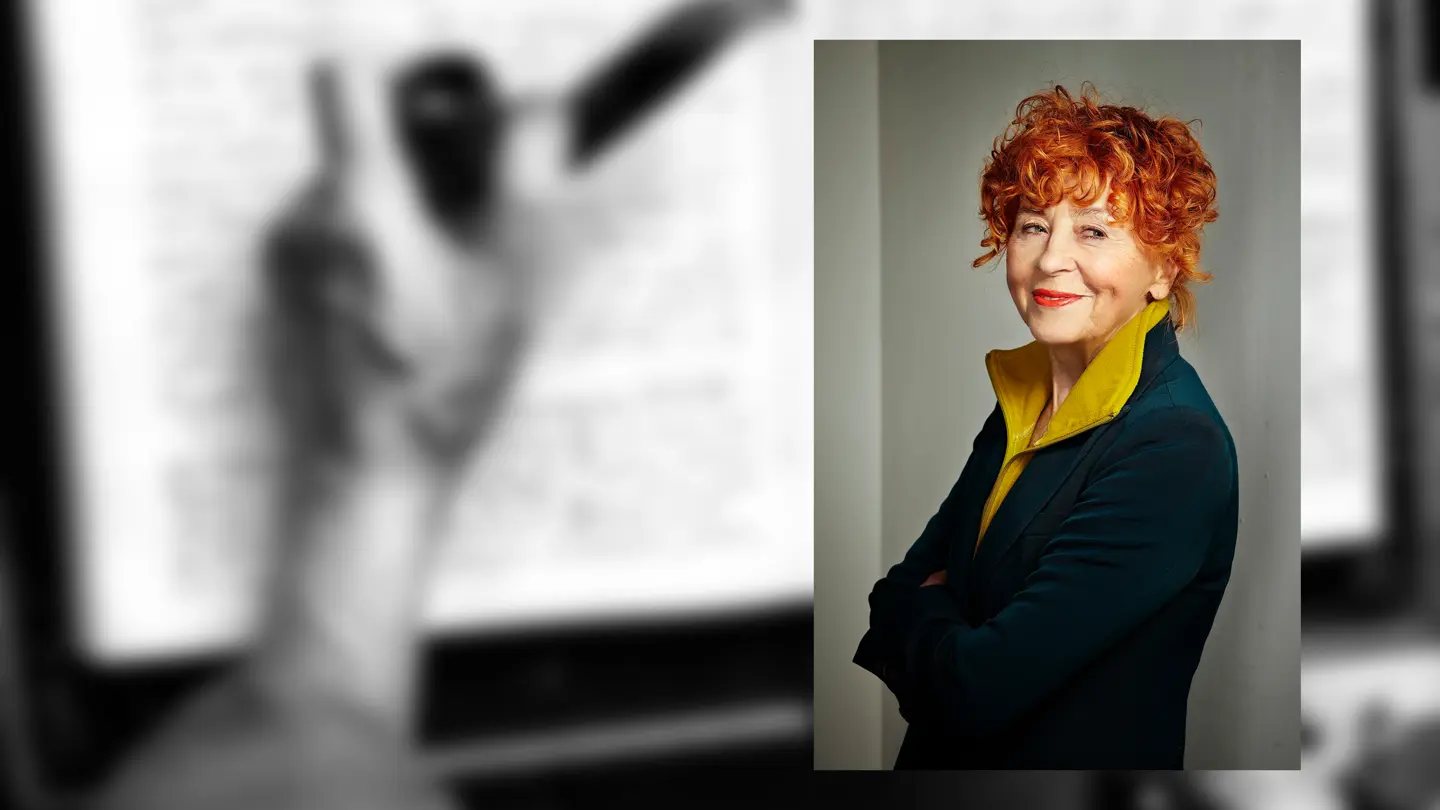
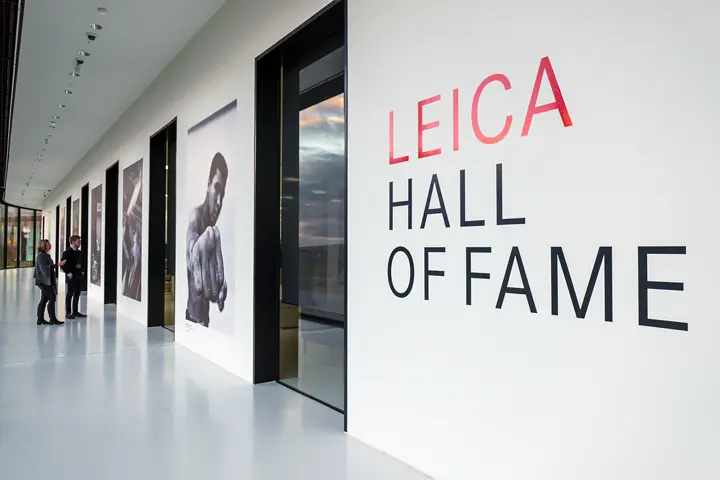
라이카 명예의 전당 수상자
라이카 명예의 전당 상은 뛰어난 사진작가들을 기리기 위해 라이카 카메라 AG가 제정한 이전의 상들에서 이어진 전통을 따르고 있습니다. 이 상은 라이카 브랜드와 사진 장르에 탁월한 공헌을 한 사진작가들에게 수여됩니다. 경쟁이나 심사위원단의 결정 없이, 상은 비정기적으로 수여됩니다.
라이카 명예의 전당 수상자
헤를린데 쾰블
헤를린데 쾰블은 1939년 10월 31일 린다우(Lindau)에서 태어났습니다. 처음에는 패션을 전공했지만, 70년대 중반부터 그녀는 사진을 창의적 표현의 매체로 삼았습니다. 이후 쾰블은 매거진과의 작업을 시작했고, 그녀의 장기 사진 프로젝트와 연결된 인터뷰가 다양한 기사로 지면에 소개되었습니다. 일부 프로젝트는 다큐멘터리 영화로 제작되기도 했습니다. 그녀의 섬세하고 철학적인 인터뷰는 <차이트 매거진(ZEIT magazin)>에 정기적으로 게재되었습니다. 35mm 카메라는 라이카를 사용했으며, 중형 포맷은 핫셀블라드로 작업했습니다. 쾰블은 20권이 넘는 사진집을 출간했고, 우수 훈장(1987), DGPh 에리히 살로몬 박사상(2001), 독일 연방 공로 훈장(2009), 바이에른 공로 훈장(2013) 등 수많은 상을 받았습니다. 작가는 현재 뮌헨 인근 노이리드(Neuried)에서 거주 중 입니다.
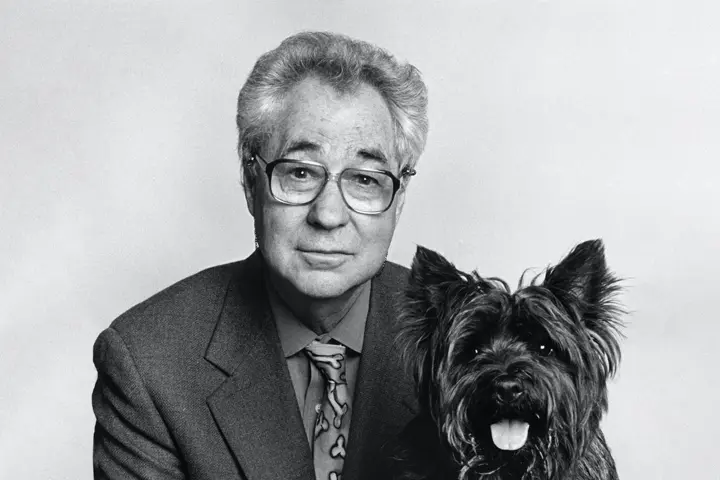
10 New York City, USA 1999 © Elliott Erwitt_MAGNUM PHOTOS
엘리엇 어윗
“저는 개 사진을 찍지 않아요. 저에게 개는 사람이기 때문이죠.”
엘리엇 어윗은 세계에서 가장 유명한 사진가 중 한 명으로 꼽힙니다. 대부분 흑백으로 촬영된 그의 작품은 저명한 인물뿐만 아니라 현대사에서 기억에 남는 순간을 포착해 현대 사진의 걸작으로 꼽힙니다. 반려견 팬이라고 밝힌 그의 사진 작품에서 동물 친구들은 특별한 역할을 합니다. 엘리엇 어윗의 사진에서 발견되는 미묘한 유머는 그의 트레이드마크입니다. 그는 1928년 7월 26일 파리에서 러시아 이민자의 아들로 태어나 밀라노에서 어린 시절을 보냈습니다. 1939년 그와 그의 가족은 프랑스를 거쳐 미국으로 이민을 떠났습니다. 열정적인 코스모폴리탄이었던 그는 1940년대 첫 사진 여행의 장소이자 매그넘(Magnum)의 창립 본부가 있던 센(Seine) 강변의 대도시로 라이카와 함께 몇 번이고 돌아왔습니다.
랄프 깁슨
"저는 현실을 그대로 모방하고 싶지 않았어요. 사진은 추상적이고, 현실을 뛰어넘어 현실과는 다른 맥락에 놓아야 하죠."
랄프 깁슨의 명확하고, 정교한 시각 언어는 독특합니다. 그의 작품에서는 추상적이고, 초현실적이며 형이상학적인 요소가 두드러집니다. 60여 년 동안 다양한 라이카 카메라를 사용하여 개별 모티프, 시리즈, 일러스트북으로 구성된 매혹적이고 밀도 있는 작품을 제작해 왔습니다. 깁슨(*1939년생)은 1960년대 도로테아 랑게(Dorothea Lange)와 로버트 프랭크(Robert Frank)의 영향을 받아 유럽 영화, 문학, 음악과의 만남을 통해 강한 대비, 그래픽적 정밀함, 시각적 암시를 기반으로 그의 예술을 발전시켰습니다. 그는 수많은 포토북을 통해 자기 작품을 발표했습니다. 깁슨은 사진가 외에도 예술 사진을 발행하는 출판인으로 활동 중입니다.
월터 보겔
"사진에는 마법 같은 무언가가 있어야 해요. 그래야 사진의 특별한 분위기가 보는 사람을 오래도록 머물게 하죠."*
월터 보겔의 레퍼토리 속 피사체는 매우 다양하며 그의 스타일은 확고합니다. 월터는 한 시대의 기록자입니다. 동시에 그는 독일 루르(Ruhr) 지역의 기록자, 전 세계를 누비는 여행 사진가, 서커스 팬, 풍자 사진가, 에스프레소 커피 애호가이기도 합니다. 그는 전통적인 사진 기자로 숙련된 눈과 완벽한 정확성으로 잊지 못할 사진 모티브를 만들어냅니다. 보겔(*1932년생)은 사진에 진정성, 정확성, 때로는 숭고한 유머 감각을 담습니다. 그는 아날로그 시대의 가장 위대한 독일 라이카 사진가 중 한 명입니다.
위르겐 샤데베르크
"사진은 곧 역사예요. 사진을 찍어야만 볼 수 있는 순간들이 있어요."
미리암 메이크바(Miriam Makeba)가 노래하는 사진이나 넬슨 만델라(Nelson Mandela)가 감옥 창살 너머로 밖을 바라보는 사진 등, 위르겐 샤데버그(1931~2020)는 오늘날까지 전설로 남아 있는 상징적인 사진을 찍은 사진가입니다. 포토저널리스트이자 '인생 사진'의 대표주자였던 그는 진정한 의미의 휴머니스트였습니다. 그는 국적이나 피부색과 관계없이 항상 공감과 존중의 마음으로 사람들을 찍었습니다. 베를린에서 태어난 그는 1950년 남아프리카공화국으로 건너갔습니다. 1964년, 그는 남아공을 떠나기 전까지 드럼 매거진(Drum magazine)에서 일하면서 한 시대의 기록자가 되었습니다. 그는 1985년에야 남아공으로 돌아와, 2007년까지 남아공의 두 번째 챕터를 촬영했습니다.
브루스 데이비슨
"저는 스스로를 다큐멘터리 사진가라고 생각하지 않아요. 다큐멘터리 사진작가는 사진 속에 있는 것이 아니라 그저 기록하는 사람이라고 생각해요. 저는 사진 속에 있지만 사진의 주인공은 아닙니다."
브루스 데이비슨은 미국에서 가장 중요한 사진가 중 한 명으로, 그의 사진 중 상당수는 역사를 기록했습니다. 그의 시선은 절대 타협하지 않습니다. 비판적이고, 섬세하며, 공감하고, 항상 자신이 촬영하는 사람에 대한 존중을 잃지 않습니다. 현재 뉴욕에 거주하고 있는 데이비슨(*1933년생)은 열정적인 헌신으로 사진 속 피사체들과 오랜 기간 함께했습니다. 그의 생각이 담긴 사진들은 단순한 기록물을 넘어 도덕적 관점을 전달함으로써 그의 작품을 한층 더 높은 수준으로 끌어올립니다.
지아니 베렌고 가르딘
"저는 사진을 통해 살아가요. 사진은 저에게 진정한 배움을 주죠 그것은 저에게 계속 나아갈 수 있는 원동력과 체력을 줍니다."
20세기 이탈리아에서 가장 영향력이 있고, 잘 알려진 사진가 중 한 명입니다. 현재 밀라노에 거주하고 있는 베렌고 가르딘(*1930년생)은 그날의 상황을 있는 그대로 묘사하는 것과 시간을 초월한 순간을 포착하는 것 사이에서 적절한 균형을 이룹니다. 그의 사진에는 종종 아이러니와 유머 감각이 가미된 우울한 분위기와 함께 미묘함이 깃들어 있습니다. 언뜻 보기에 그의 작품은 단순하다고 느낄 수도 있는데, 이것이 바로 그만의 독특한 스타일입니다. 즉흥적으로 보이는 순간의 형태로 세상을 진실하게 묘사하고, 정지된 시간의 조각을 만들면서도 항상 깔끔하게 정리된 구도 안에 담아내는 것이 바로 그만의 스타일입니다.
조엘 마이어로위츠
"저는 종종 카메라가 마치 지팡이처럼 나를 이끌어준다고 생각해요. 카메라를 손에 들고 있거나 어깨에 메고 있으면, 저에게 세상을 볼 수 있는 자격이 생기죠."
조엘 마이어로위츠는 미국 스트리트 포토그래피와 컬러 사진의 대표적인 거장 중 한 명입니다. 이 사진가(*1938년생)는 일상 속 복잡한 혼란 속에서 놀랍고 때로는 매우 호기심을 불러일으키는 순간을 포착해 냅니다. “길거리에 일어나는 모든 일들이 선물과 같습니다. 하지만 매일 밖에 나가야만 그 선물을 받을 수 있죠.” 그는 고향인 뉴욕뿐만 아니라 다양한 나라와 도시에서 그의 대표작들을 찍었습니다.
조엘 마이어로위츠는 2016년에 라이카 명예의 전당에 선정되었습니다. 상은 이듬해에 그에게 직접 수여되었습니다.
아라 귈러
"좋은 사진가는 사람에 대한 애정이 있어야 합니다. 사진은 기록을 만드는 수단이죠. 그 목적은 이야기를 전달하고 보는 사람이 결론을 도출할 수 있도록 하는 것이에요. 이것이 바로 사진의 매력이에요."
오늘날까지 아라 귈러(1928-2018)는 “이스탄불의 눈”으로 불립니다. 그는 반세기 동안 전 세계를 여행하며 사진을 찍었지만, 이스탄불이야말로 그의 진정한 열정이 담긴 곳입니다. 이스탄불은 그가 태어난 곳이자 평생을 살면서 일한 곳이기도 합니다. 1950년대부터 귈러는 활기찬 거리 생활과 대도시의 번잡함, 그리고 보스포러스(Bosporus) 해협에 위치한 대도시 주민들의 숨겨진 일상을 독보적인 방식으로 기록했습니다. 그는 라이카를 사용하여 장면을 구성하고 이를 분위기 있는 사진에 담아냈습니다. 그 과정에서 귈러는 자기 고향에서 급격한 변화를 기록한 기록자가 되었습니다.
아라 귈러는 2015년 라이카 명예의 전당에 선정되었습니다. 이 상은 이듬해에 그에게 직접 수여되었습니다.
토마스 헵커
“저는 인위적이지 않고 진실을 왜곡하지 않으면서도 도발적인 사진을 원해요.”
사진가 토마스 헵커(*1936년생)는 항상 겸손한 태도로 자신을 진실, 순간의 정직함에만 관심이 있는 사진가라고 소개합니다. 그는 1959년부터 국제 잡지와 연감에서 일하기 시작했습니다. 그는 크리스털 매거진(Kristall magazine)의 임무를 받아 수개월 동안 미국 전역을 여행하며, 1966년에는 무하마드 알리(Muhammad Ali)에 대한 전설적인 보도인 *챔프(Champ)*를 제작했습니다. 1964년부터 스턴(Stern)에서 사진가로 활동하기 시작한 그는, 이후에는 80년대 말 아트 디렉터로서 스턴의 전체적인 스타일에 영향을 주었습니다. 1989년 매그넘 에이전시(Magnum Agency)의 정회원이 되어 2003년부터 2007년까지 기관을 이끌었습니다. 헵커는 정확한 구도, 긴밀한 시각적 표현, 세련된 이미지로 독일 포토저널리즘에 큰 영향을 미친 사진가입니다.
르네 부리
"호기심에 이끌려 세상으로 나간 저는 사진으로 세상을 이해하고 그 격변과 역사를 전달하고 싶었어요. 사진가로서 그것이 제가 할 수 있는 전부입니다."
스위스 사진가 르네 부리(1933~2014)는 항상 다른 문화, 삶의 방식, 정치적 접근 방식에 대한 호기심과 개방성으로 가득 찬 채 전 세계를 여행했습니다. 저널리즘 시리즈, 멋진 개인 사진, 섬세한 초상화, 매혹적인 건축 연구 등 매그넘 사진 에이전시(Magnum photo agency)의 저명한 멤버였던 그는 항상 사진의 정치적, 사회적 또는 역사적 메시지를 넘어 시대를 초월한 차원을 포착해냈습니다. 따라서 리우데자네이루 보건부(Ministry of Health in Rio de Janeiro) 건물에서 촬영한 모티브는 빛과 그림자의 완벽한 구도뿐만 아니라 사회적 역할 모델도 반영하고 있습니다.
닉 우트
“저는 임무를 수행할 때마다 스토리를 찾아요.”
닉 우트(*1951년생)는 형이 사망한 후 형의 카메라를 물려받아 베트남에서 사진기자로 일하기 시작했습니다. 그는 역사상 가장 유명한 전쟁 사진 중 하나를 촬영했습니다. 1972년 6월 8일에 촬영된 이 사진은 네이팜탄이 투하된 지 몇 분 후 비명을 지르는 킴푹(Kim Phuc)을 중심으로 도망치는 베트남 희생자들의 모습을 담고 있습니다. 이 라이카 사진은 전 세계로 퍼져나가며 우트를 세계적으로 유명하게 만들었습니다. 사진 속 중상을 입은 소녀는 구출되었고 두 사람은 평생 친구가 되었습니다. 베트남 전쟁이 끝난 후 우트는 미국으로 건너가 미국 시민권을 취득했습니다.
바바라 클렘
"제가 할 수 있는 모든 것은 경험을 통해 배운 것이죠. 저는 항상 모든 것을 걸고 최선을 다해요."
바바라 클렙은 시대를 간결하게 기록하는 사진가입니다. 그녀의 사진은 우리 모두의 기억 속에 남아있는 중요한 순간을 기록합니다. 바바라 클렙(*1939년생)은 1959년부터 FAZ 신문사에서 사진가로 활동했습니다. 또한 그는 1970년부터 2004년 말까지 정치 및 특집 사진을 전문으로 하는 사진가로 활동했습니다. 바바라 클렘은 학생 시위, 냉전, 베를린 장벽 붕괴, 콜(Kohl) 시대와 현대 독일을 대표하는 이미지를 촬영해 왔습니다. 또한 그는 전 세계를 여행하며 사람들의 삶과 일상을 섬세한 사진으로 담아냈습니다.
스티브 맥커리
"저는 사람을 중심으로 사진을 찍어요. 저는 무방비한 순간, 사람의 얼굴에 새겨진 경험 속에서 그 사람의 본질적인 모습이 드러나는 순간을 찾죠. 마치 그 사람이 된 듯한 느낌을 전달하려고 해요."
미국 출신 사진가 스티브 맥커리(*1950년생)는 40여 년 동안 현대 사진의 가장 상징적인 인물 중 한 명입니다. 그는 수많은 잡지와 책 표지, 십여 권 이상의 책, 전 세계 수많은 전시회를 통해 자신의 이름을 알렸습니다. 그의 작품은 분쟁, 사라져가는 문화, 고대 전통과 현대 문화를 모두 아우르면서도 항상 인간적인 요소를 담고 있습니다. 1986년 맥커리는 매그넘 포토스(Magnum Photos)의 정회원이 되었습니다.
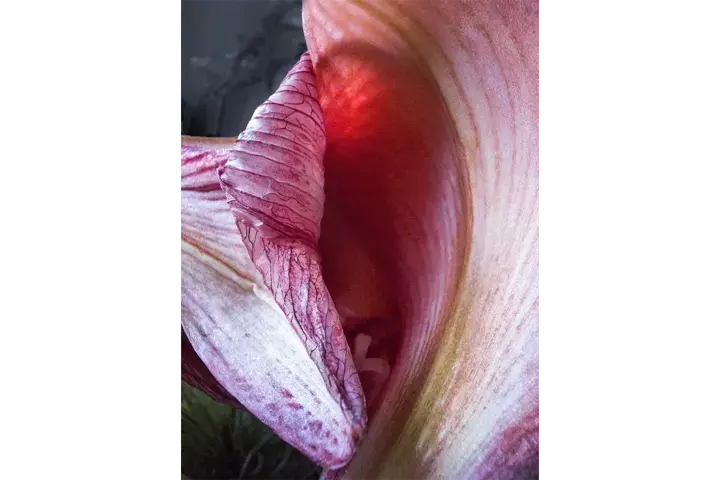
@Herlinde Koelbl
2021년을 시작으로 라이카 카메라 AG는 라이카 명예의 전당에 선정되었던 뛰어난 라이카 사진가들을 통해 “라이카 올해의 사진“을 발표하고 있습니다. 지금까지 13명의 세계적인 작가들이 명예의 전당에 올랐으며, 라이카 유저들과 성공의 기쁨을 나눈다는 목표 하에 “라이카 올해의 사진“은 전세계 29개 라이카 갤러리에서 독점 공개됩니다. 이 한정판 작품들은 아트 컬랙터와 라이카 팬들에게 위대한 라이카 사진을 소장할 기회를 선사합니다.


